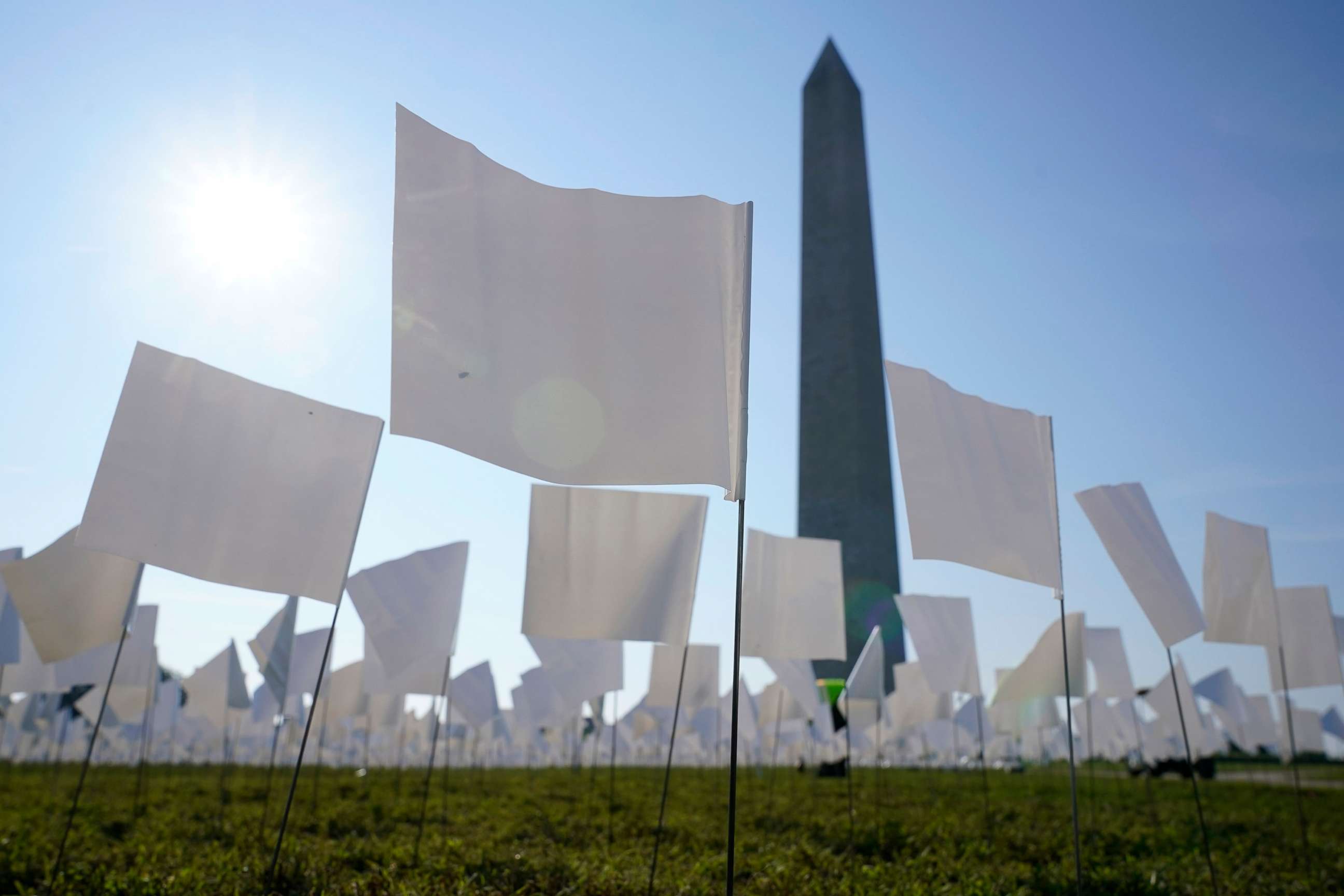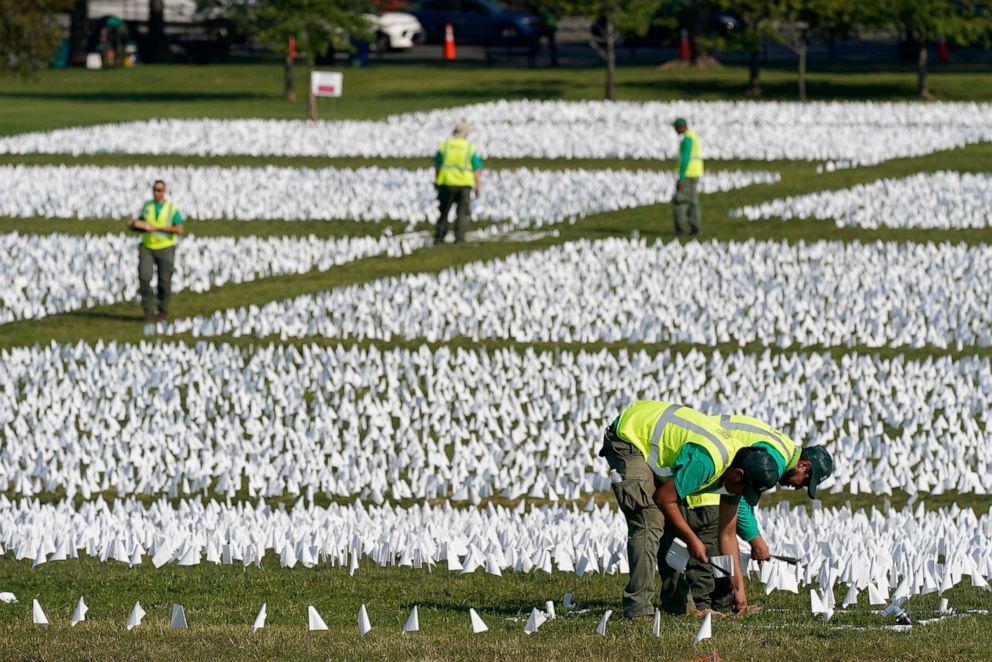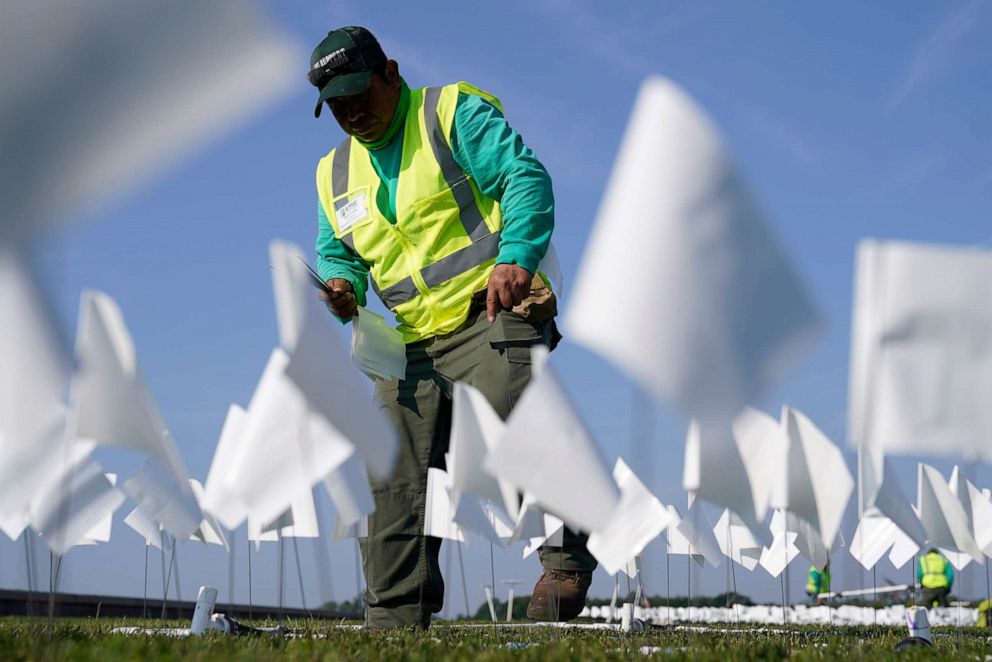More than 600,000 flags on National Mall stand witness to America's COVID dead
The number of flags has nearly tripled since the first display in fall 2020.
On one small, white rectangle is the name of a 29-year-old engineer, on another the name of a World War II veteran, and on a third, that of a 15-year-old -- just three of more than 600,000 flags on the National Mall reflecting the devastating impact COVID-19 has had on American lives and the country.

On the grassy expanse near the Washington Monument, the field of flags is being displayed as a part of a chilling exhibition called "In America: Remember."
Each represents a life lost to the pandemic, and each sits amid a sea of symbolic grief.
This is the second stunning exhibit based on a project trying to capture, the artist said, the "human dignity" behind the mind-numbing numbers.
Back in the fall of 2020, the first featured a then-unthinkable 200,000 flags near RFK Stadium in Washington.
Since then, the scope of the new project has more than tripled as the death toll fro COVIF-19 continues to rise, on Monday surpassing that of the 1918 influenza pandemic, now topping 675,000 -- or one in every 500 Americans.
The exhibit, unveiled Friday, will stay on the National Mall until Oct. 3.
Suzanne Brennan Firstenberg, the artist, spoke with ABC News as more and more flags were being placed last week.

"It's really hard to think about the grief that is just embodied by one flag," Firstenberg said. "And when as you walk amongst 660,000, it's unimaginable the pain that people have gone through."
Visitors can walk among the flags on more than 3 miles of paths to view the exhibit and can also stop at a table and personalize a flag with the name of a loved one lost.
Some visitors took to social media to post photos and describe the scene.
Many now also carry messages from across the country submitted on the project's website, messages to mothers, fathers, siblings and friends. Firstenberg said she hoped it could be cathartic for families not able to hold large funerals or be with family and other loved ones given pandemic restrictions.

Some are to strangers, but fellow Americans.
She recalled one emergency room doctor who traveled to Washington from New York last fall to add the names of 12 patients he lost to COVID.
He then turned around, she said, heading back to start a new shift.
The exhibit is the largest participatory installation since the AIDS quilt was displayed on the National Mall in October 1987.
Firstenberg said she hopes the flags, and the sound of them being pulled in the wind, will give visitors "a moment of pause."
"This is all of our art," she said, "because it's when people personalize flags and a complete stranger comes and meets that flag and feels something, senses the grief that is embodied by just that one flag, they created the art, too."
]/>




